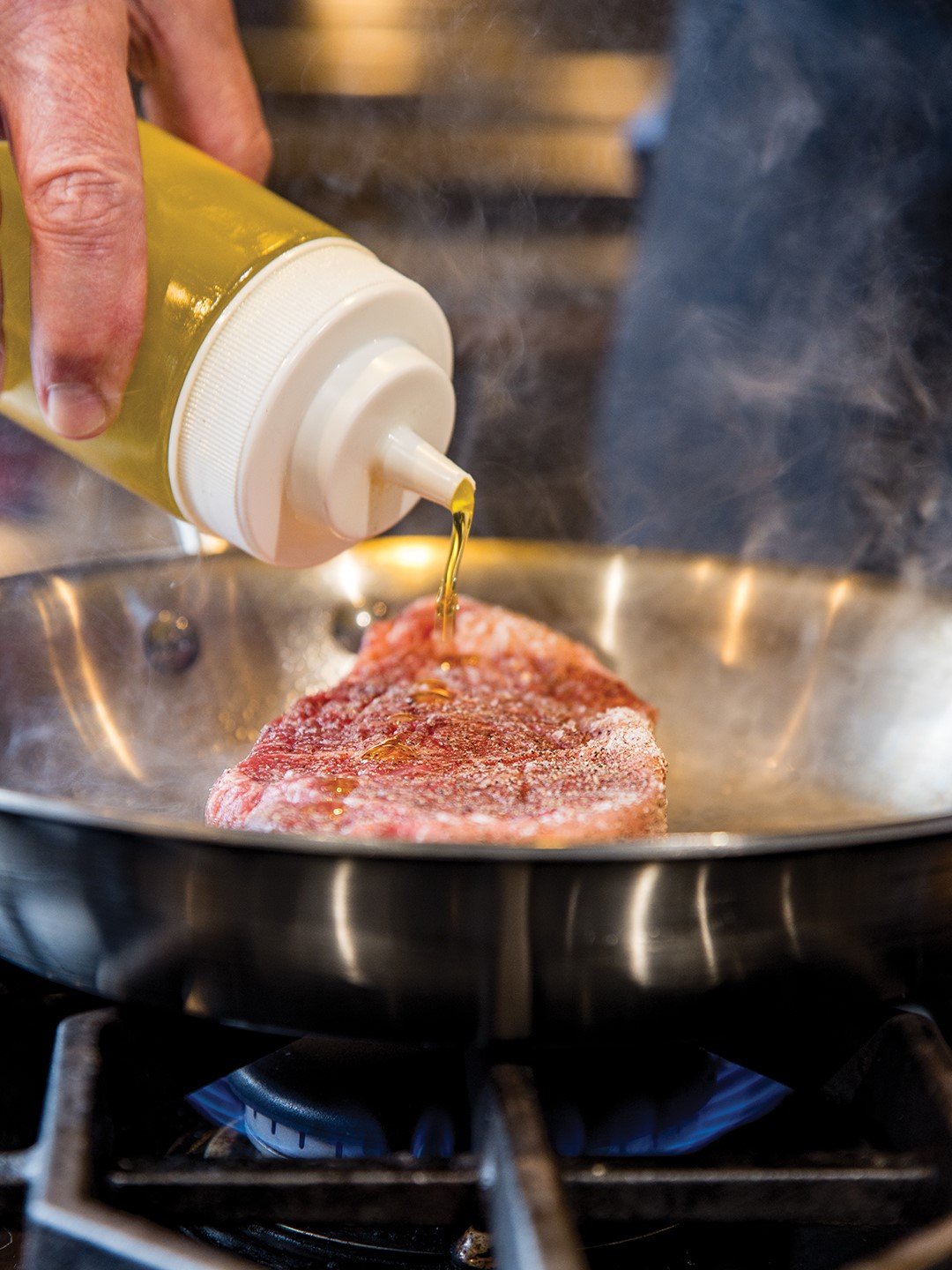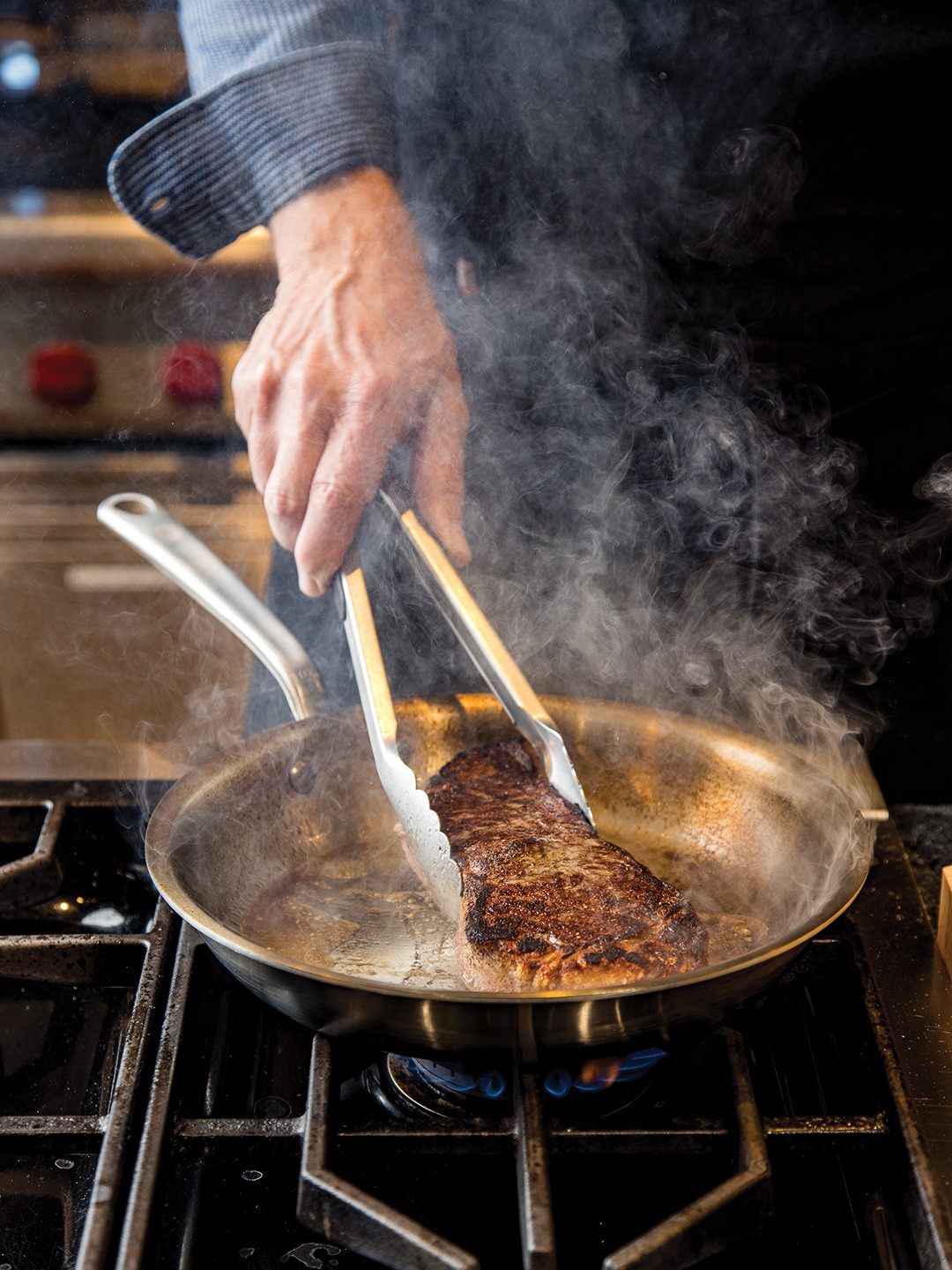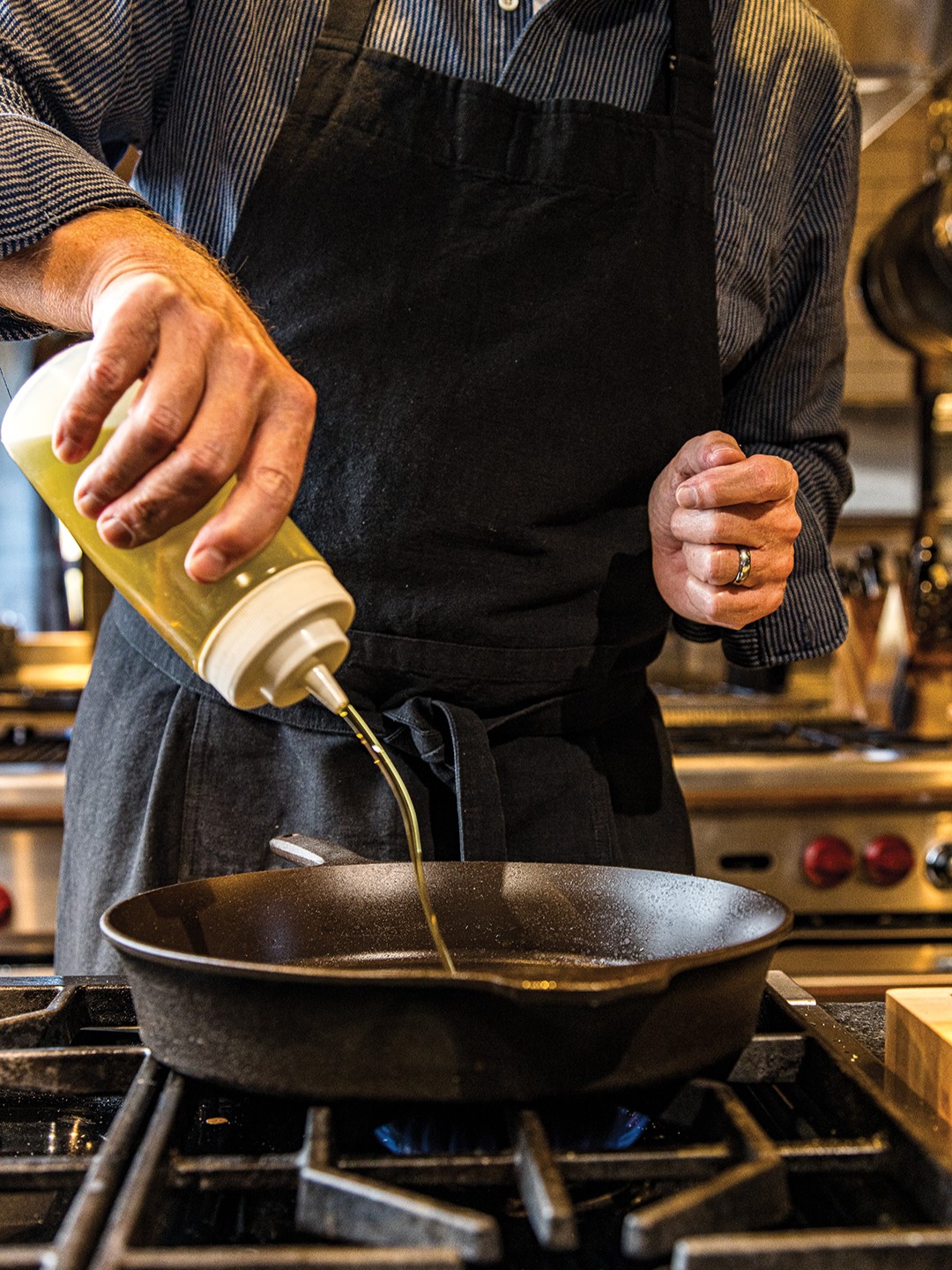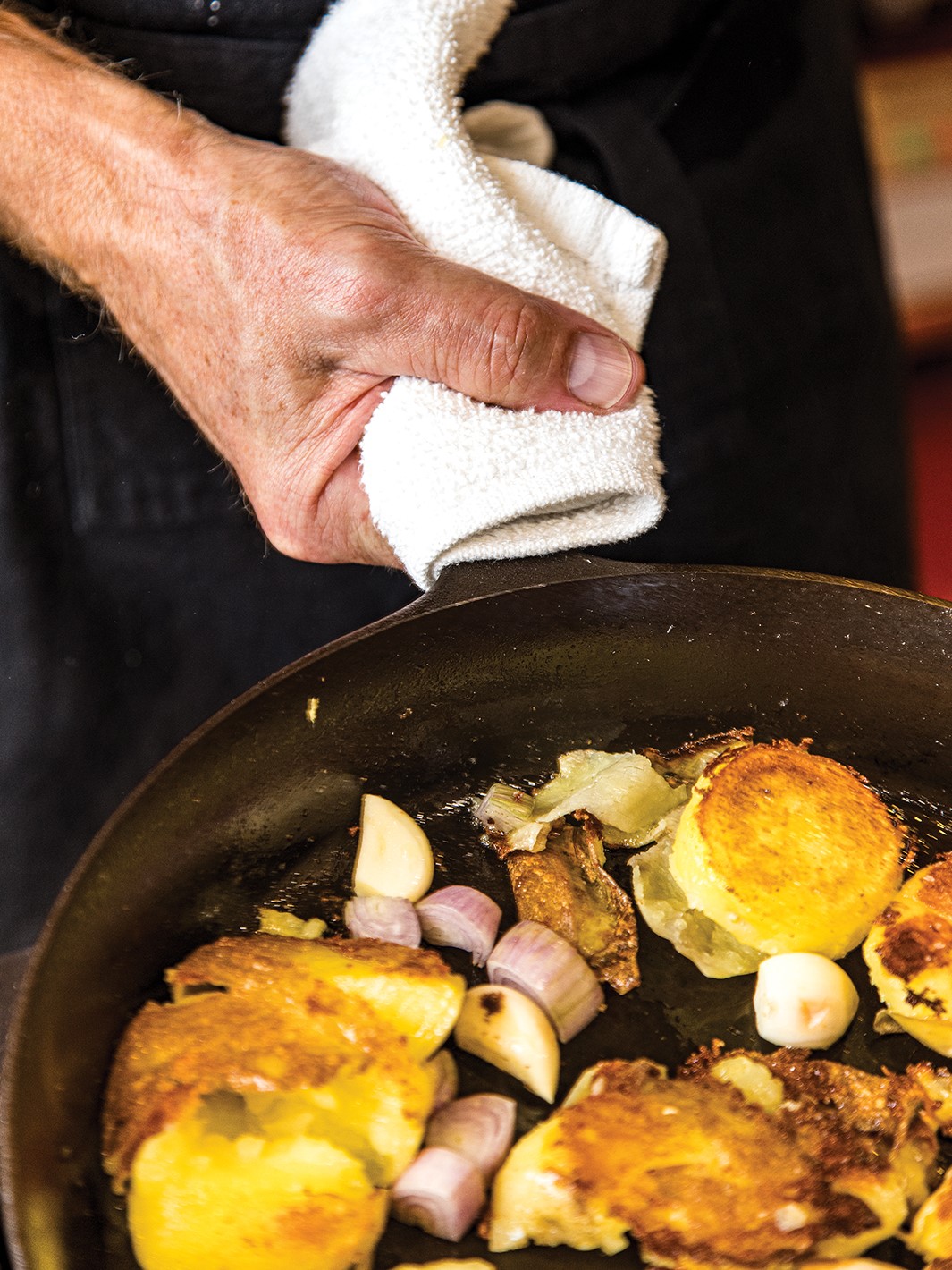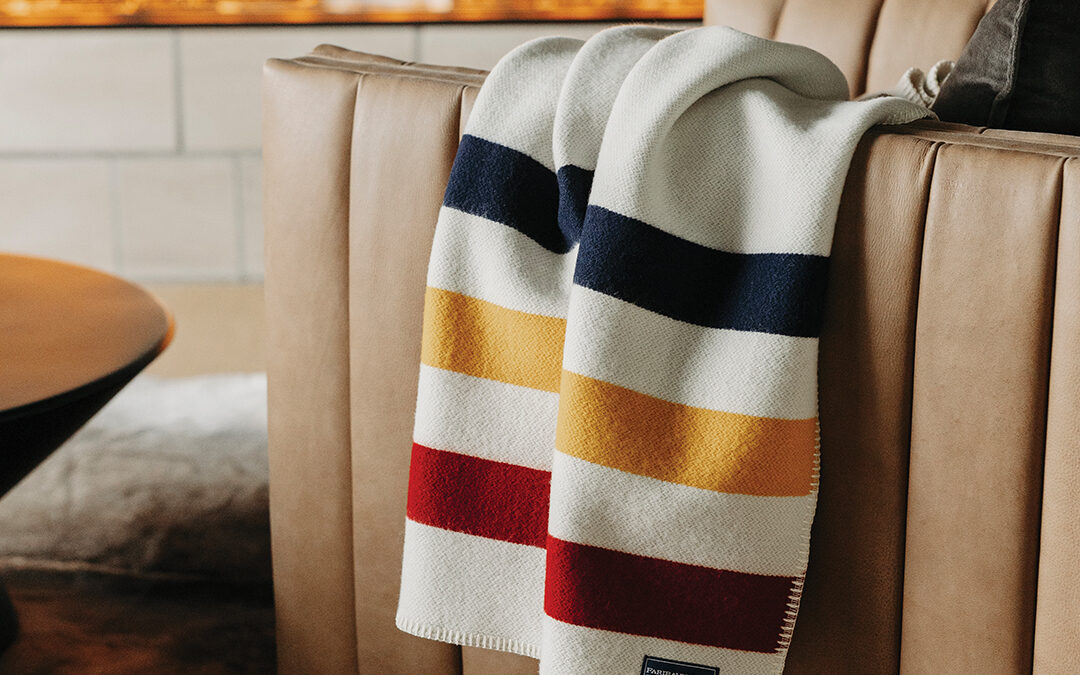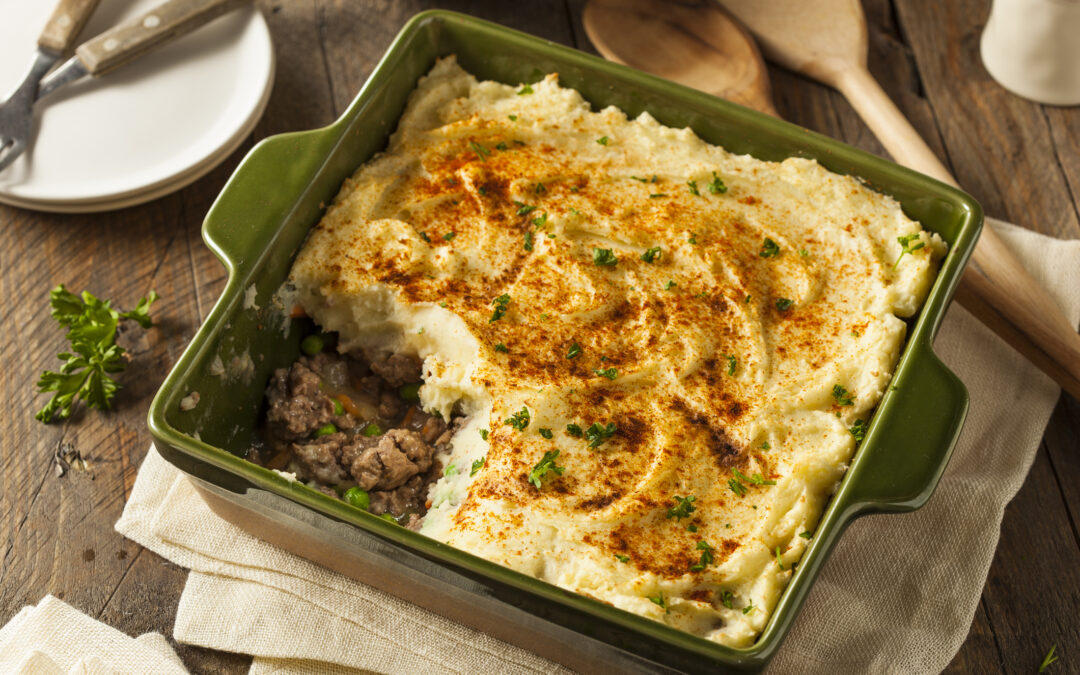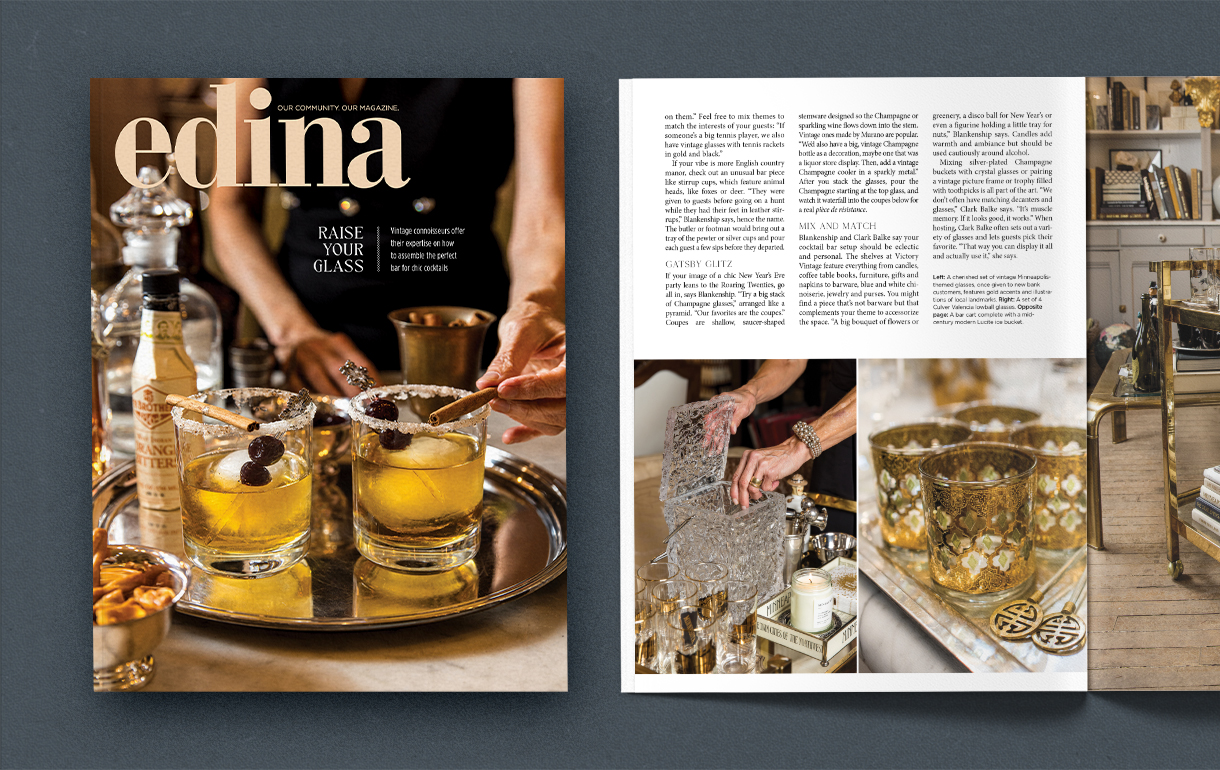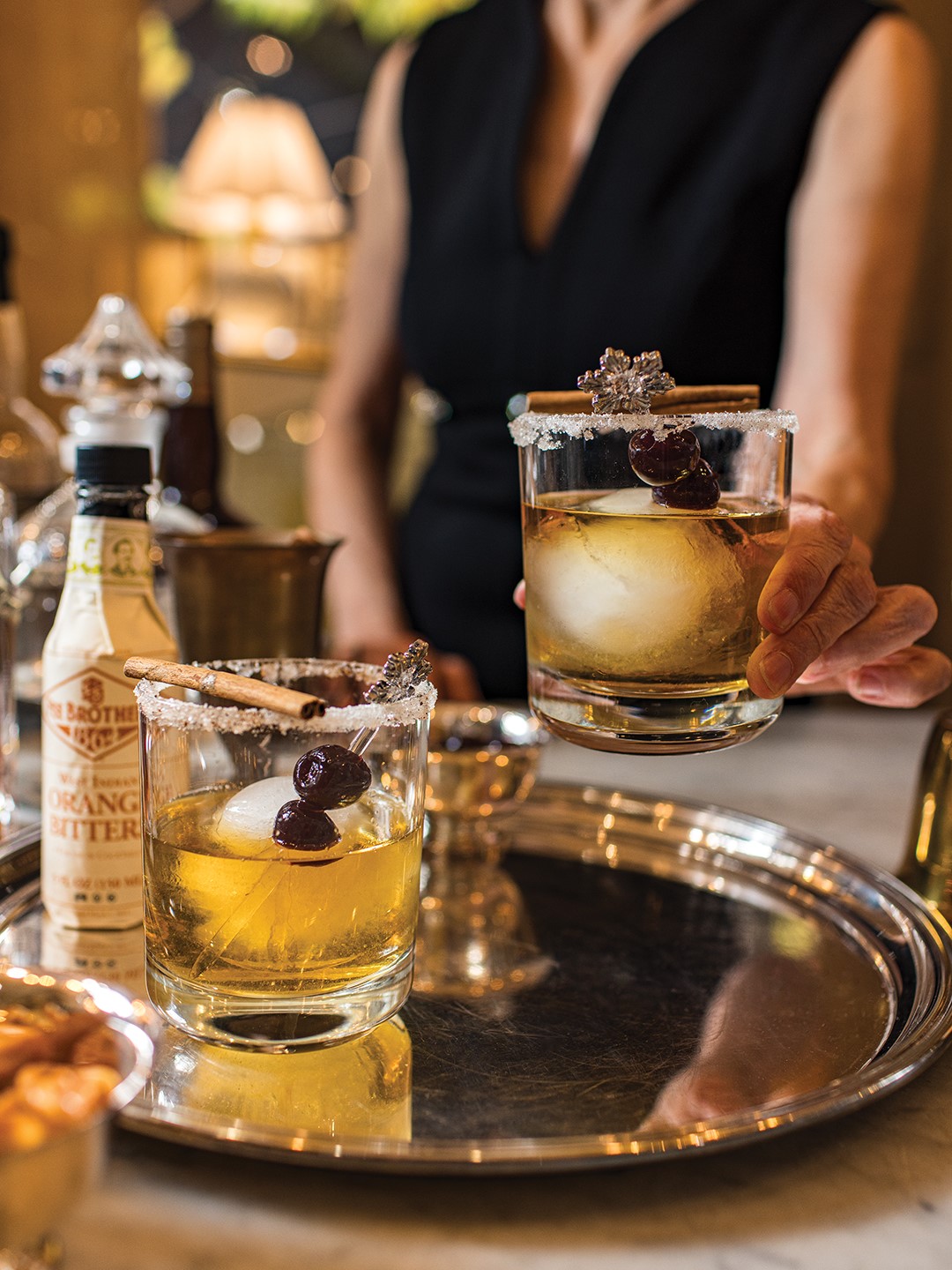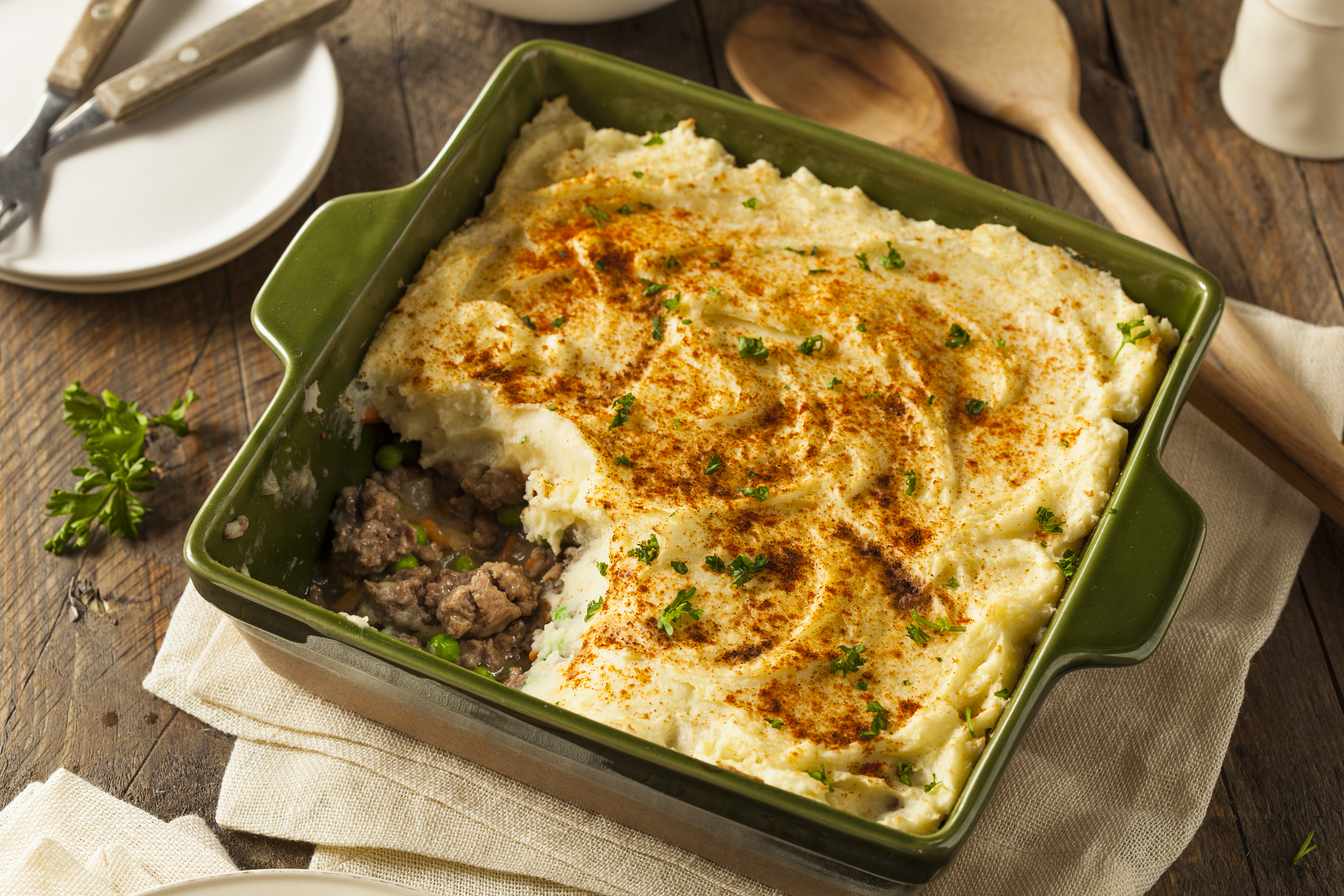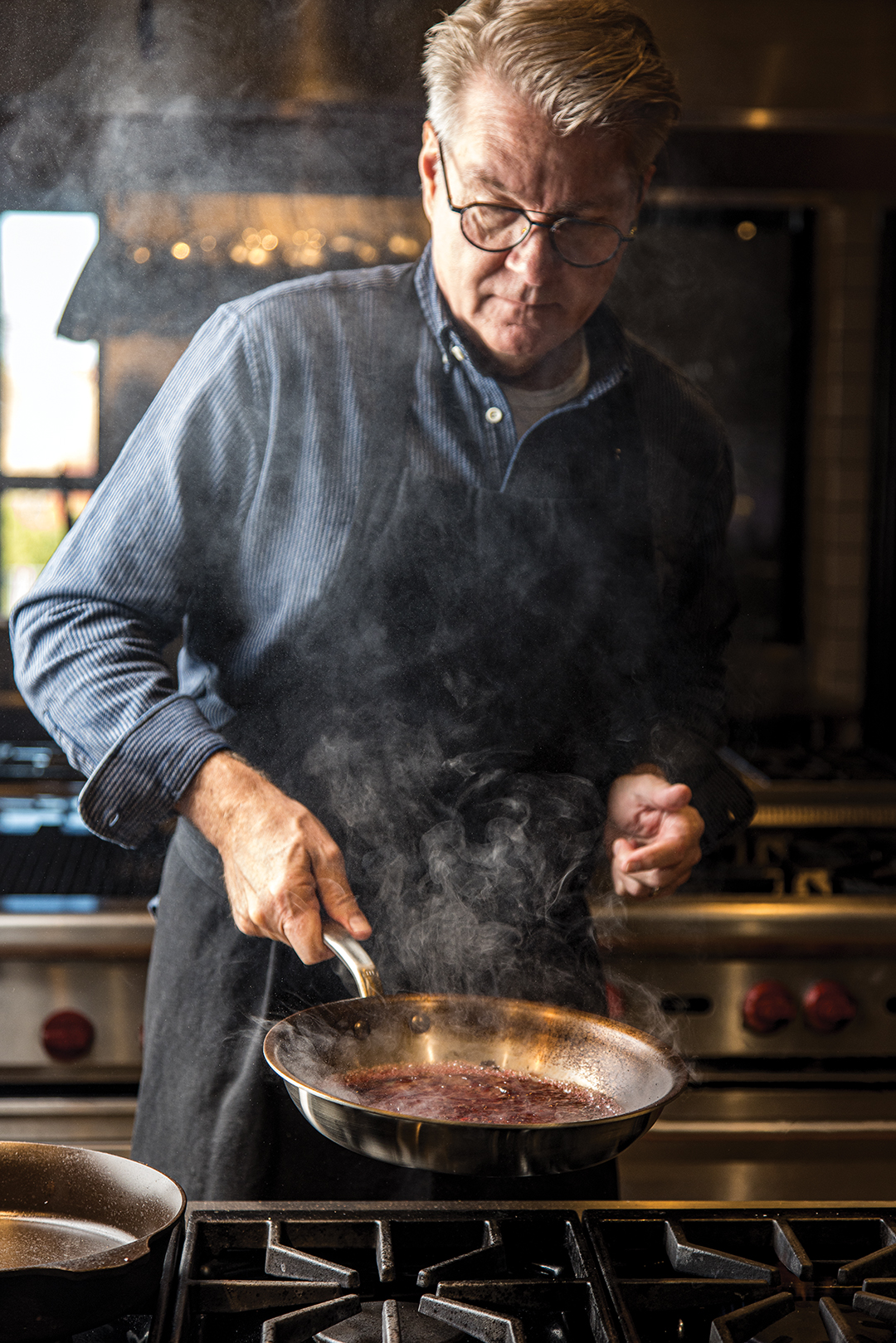
Karl Benson, co-owner of Cooks|Bellecour. Photos: Chris Emeott
Minnesota is leading the nation in PFAS prohibitions, but what are the other options?
On January 1, 2025, Minnesota continued its legislative action against PFAS, also known as polyfluoroalkyl substances or “forever chemicals.” According to Minnesota’s Pollution Control Agency, the state has enacted laws that will end avoidable PFAS use in Minnesota by 2032.
“Small amounts of PFAS may be harmful. Some build up in people over time, and all are difficult to remove from the environment,” states the Minnesota Pollution Control Agency’s PFAS Blueprint, which outlines this plan.
On the list of products that prohibit intentionally added PFAS is cookware. Most modern nonstick cookware is made with materials that include PFAS. Once these materials begin to break away from the surface, they can move into our bodies or water systems and last forever, never breaking down.
Thankfully, there are lots of alternatives to common nonstick cookware that are already available and easy to use. Minnesota is at the forefront of the country’s move away from PFAS, and due to the legislative push, demand has forced manufacturers to respond.
“Our vendors can see the writing on the wall—we won’t be the last state to do this. We are way ahead of the curve,” says Marie Dwyer, co-owner of Cooks|Bellecour, a cookware store, cooking school and bakery with locations in Edina, Minneapolis and St. Paul. Dwyer is also the company’s brand and creative director.
Dwyer encourages people to learn a bit more about how to cook with different materials. “You can get any cookware to perform as a nonstick surface. You just have to be willing and able and open minded to make a change,” she says. Stainless steel and cast iron are the classics, but people tend to shy away from them because they’re not sure how to properly prepare, cook with, clean and maintain these pieces.
For Dwyer and the team at Cooks|Bellecour, it’s all about teaching customers how to use the piece of cookware that they’re buying. Being patient, properly preheating the pan and the fat you’re cooking with, “that’s the number one tip,” she says.
Stainless Steel
- Preheat “plenty of fat” in your pan, Dwyer says. “Enough to seriously coat the bottom of the pan. [The amount] depends on the size of the pan.”
- Patience is key. “If you’re using high quality pans, you don’t have to crank up the heat. You can do everything on a medium setting,” Dwyer says.
- Understand when food is properly cooked. “Say you’re cooking a chicken breast. Once the chicken is in the pan, don’t crank the heat. Watch the chicken, and once you jiggle the pan and it releases, having formed a crust, it’s ready to flip,” she says. “If it’s super stuck on there, give it a little more time. You can add a little more fat in the pan … Utilize patience. You really have to have a seared crust. Once it’s nice and crusty, it will release on its own.”
Karl Benson demonstrates how easy it can be to prepare a lovely steak and sauteed mushrooms in the same stainless steel pan.
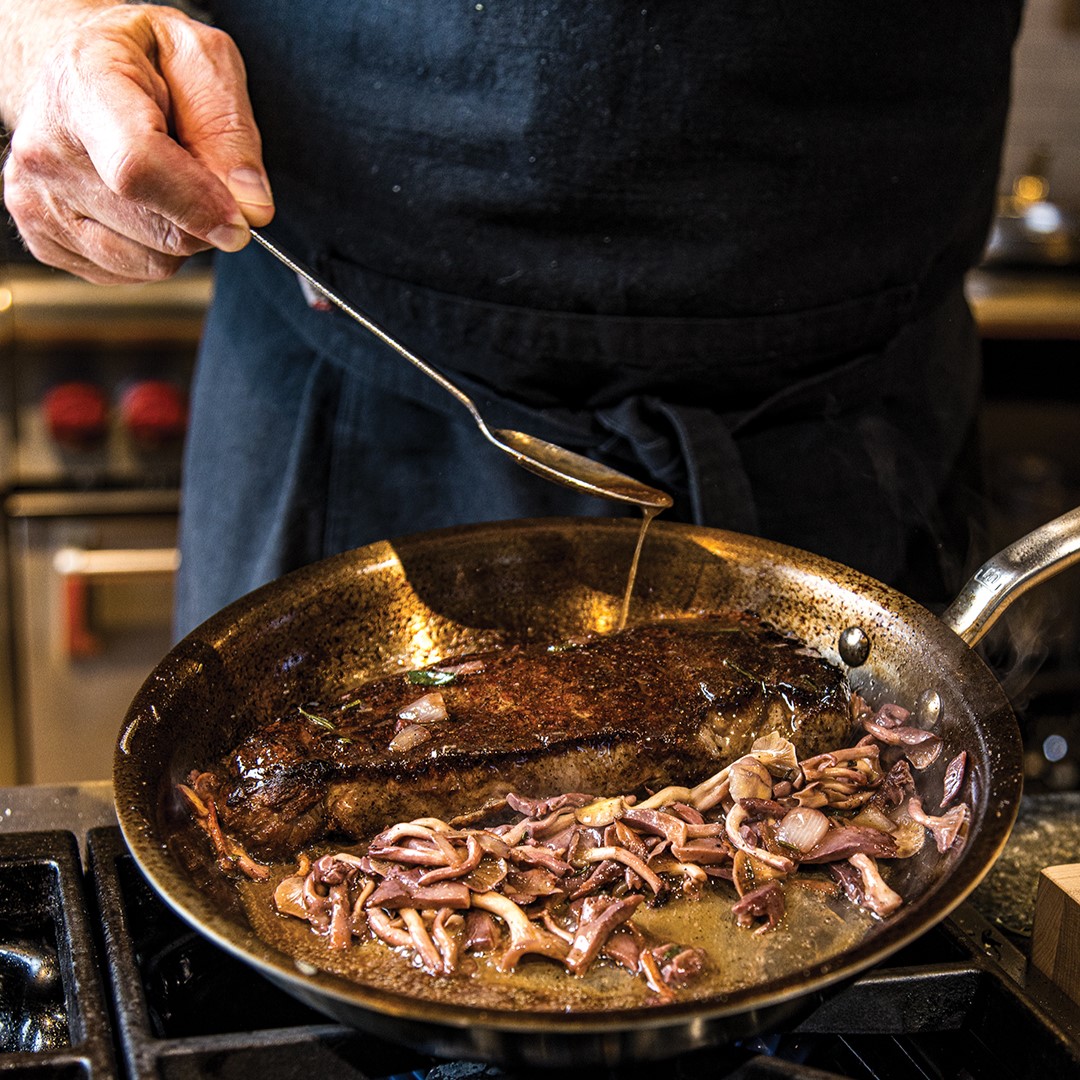
Cast Iron
- Cast iron needs to be seasoned, so first you’ll begin by thoroughly washing and hand drying.
- Apply a thin, even layer of cooking oil to the interior of the pan with a paper towel to the entire surface. Grapeseed oil and sunflower oil are great options. Use any oil that withstands high heat or a real neutral vegetable oil or avocado oil. Anything that really has a high smoke point.
- Lodge brand recommends placing the pan upside down in a 450 F oven for one hour. Allow it to cool completely. Field brand recommends warming a pan initially for 10 minutes at 200 F. Remove the pan, increase the temperature to 300 F and warm the pan for 10 more minutes. Remove it a third time, increase the heat to 400 F, and warm the pan for one hour. Do not open the door while it’s in the oven. After an hour, turn off the oven; let the pan cool for another full hour.
- Once the pan is seasoned, you can cook on it with the same steps as described for stainless steel.
Karl Benson prepares his Smashed Potatoes in a perfectly seasoned cast iron skillet. With just a quick wipe, clean up is a breeze—thanks to proper preheating.
When talking with customers about nonstick cookware, Dwyer says that most people prefer it because of the easy cleanup. When you use stainless steel and cast iron properly, however, the cleanup is just as easy. “Warm soapy water with a nonabrasive scrubby. If you haven’t tried to remove the ingredient prior to it releasing, it’s pretty easy to clean up,” Dwyer says. Waiting is crucial during the cooking process, so that cleanup is a breeze.
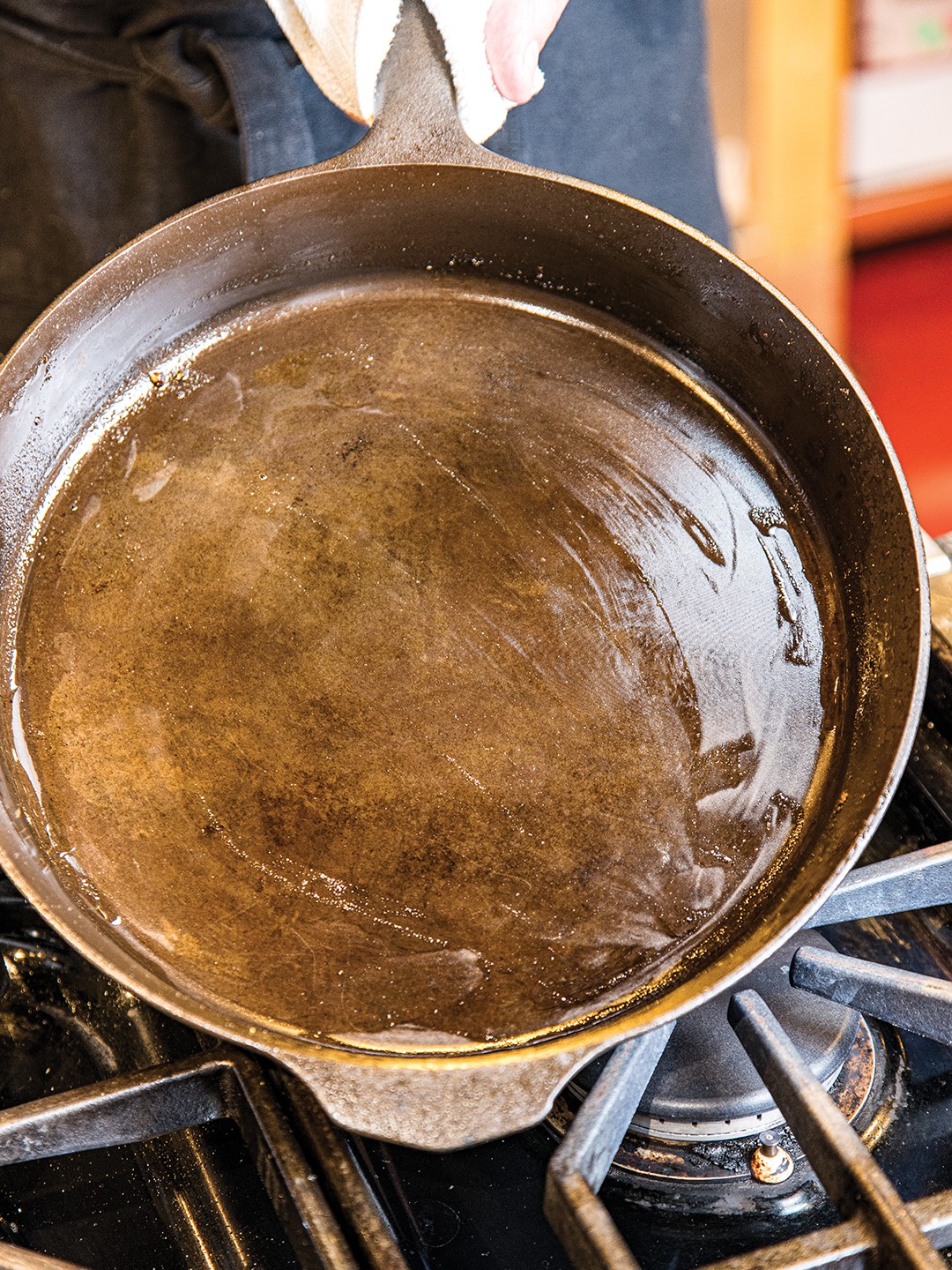
However, if you’re someone who just can’t give up that nonstick surface, or you like to have at least one nonstick pan in your cupboard, Dwyer’s got you covered. “Ceramic is now our go-to for a good nonstick pan. It’s actually more slick than the old PFAS stuff that we used to carry,” Dwyer says. “You don’t have to have that same level of awareness with ceramic as you do with stainless steel or cast iron. You can be a little more lax with it just like you were with PFAS. That’s how you can feel about ceramic.”
But like other nonstick cookware, Dwyer says you have to be aware of what you use while cooking in it. “You want to make sure you’re using nonstick-friendly tools—silicone spatulas, high-heat nylon turners, anything wood is great,” she says. “We don’t recommend metal utensils at all because it will scratch. And once it gets scratched, it’ll lose its nonstick and it’ll collect food and oils. You’re shortening the life of its nonstick ability.”
She also notes that ceramic cookware should never be heated up to high heat. “The problem with cranking too high is that the coating will break down easier and won’t last as long as you want it to,” she says. For the record, you can use whatever cooking tools you want on stainless steel and cast iron pieces. “They’re tough. They last a lifetime,” she says.
If you’re looking for a solid piece of cookware that you won’t have to replace anytime soon, stainless steel or cast iron is the way to go. Nonstick surfaces, both the old PFAS types and the new ceramic options, are more affected by things like the material of the tool you’re using, how much heat is applied and how you clean them. It’s not super complicated, but as Dwyer says, “life happens.” You might inadvertently slice through a piece of chicken and scratch the surface or accidentally throw it in the dishwasher instead of hand washing.
Cast iron and stainless steel are more resilient, and even cast iron can always be reseasoned, cleaned of rust and used for years to come. That being said, cookware comes down to personal preference. “We don’t want to put anyone in a pan that they’re not feeling confident leaving the store,” Dwyer says.
Understanding PFAS
Matt Simcik, a professor of environmental health sciences at the University of Minnesota, has been studying PFAS for more than 20 years. “Biology has never really seen this stuff, so [it] can’t break it down. It gets into our system and causes problems,” Simick says. He suggests checking out Minnesota’s Pollution Control Agency’s website (pca.state.mn.us) for more information about PFAS, including where they’re found and and how to minimize exposure.
Beyond cookware, Minnesota has also prohibited the intentional use of PFAS in cleaning products, cosmetics, ski wax and dental floss, among other things.
Cooks|Bellecour
3934 Market St.; 952.285.1903
Instagram: @cooksbellecour

